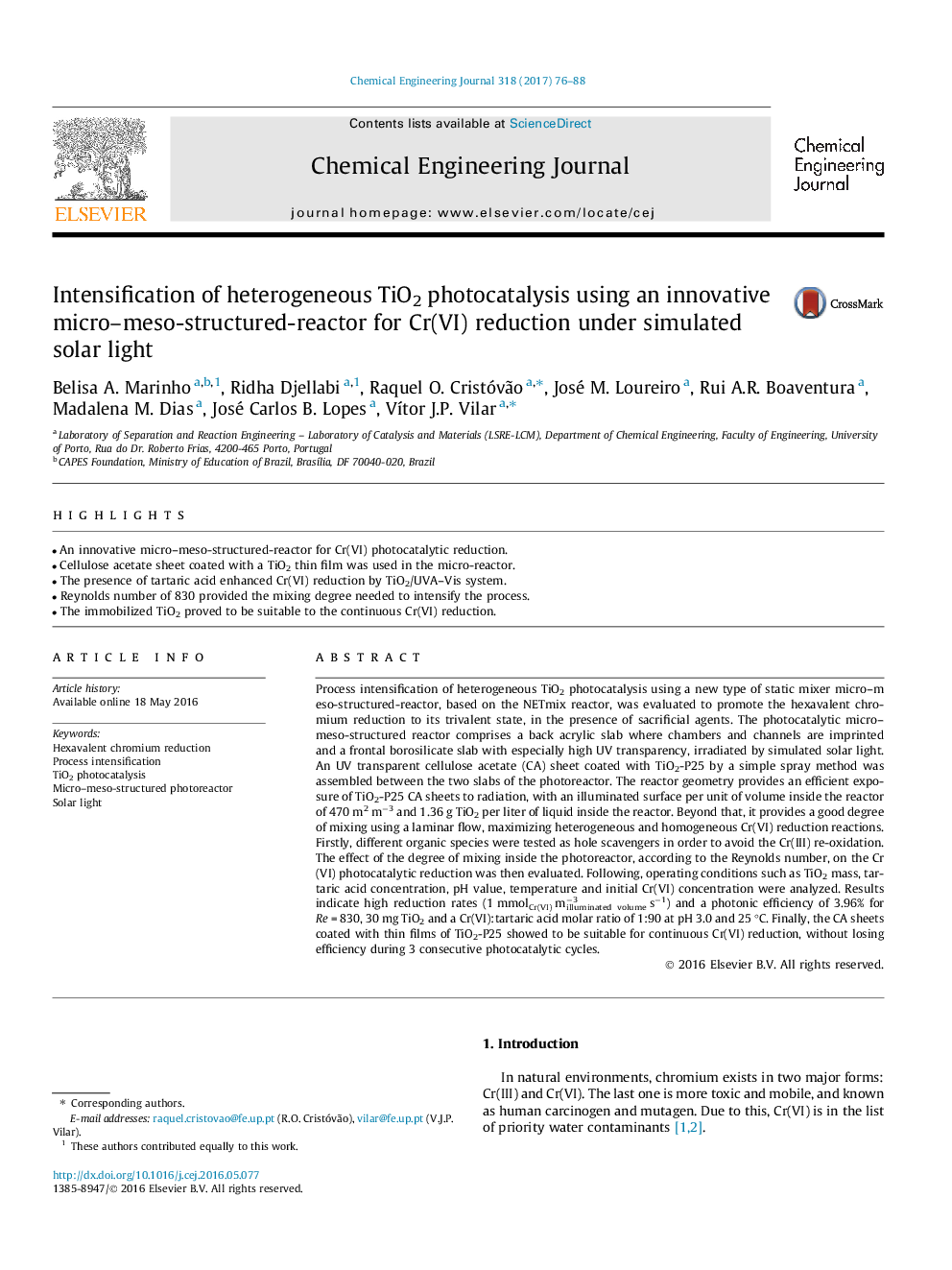| کد مقاله | کد نشریه | سال انتشار | مقاله انگلیسی | نسخه تمام متن |
|---|---|---|---|---|
| 6466247 | 1422960 | 2017 | 13 صفحه PDF | دانلود رایگان |

- An innovative micro-meso-structured-reactor for Cr(VI) photocatalytic reduction.
- Cellulose acetate sheet coated with a TiO2 thin film was used in the micro-reactor.
- The presence of tartaric acid enhanced Cr(VI) reduction by TiO2/UVA-Vis system.
- Reynolds number of 830 provided the mixing degree needed to intensify the process.
- The immobilized TiO2 proved to be suitable to the continuous Cr(VI) reduction.
Process intensification of heterogeneous TiO2 photocatalysis using a new type of static mixer micro-meso-structured-reactor, based on the NETmix reactor, was evaluated to promote the hexavalent chromium reduction to its trivalent state, in the presence of sacrificial agents. The photocatalytic micro-meso-structured reactor comprises a back acrylic slab where chambers and channels are imprinted and a frontal borosilicate slab with especially high UV transparency, irradiated by simulated solar light. An UV transparent cellulose acetate (CA) sheet coated with TiO2-P25 by a simple spray method was assembled between the two slabs of the photoreactor. The reactor geometry provides an efficient exposure of TiO2-P25 CA sheets to radiation, with an illuminated surface per unit of volume inside the reactor of 470 m2 mâ3 and 1.36 g TiO2 per liter of liquid inside the reactor. Beyond that, it provides a good degree of mixing using a laminar flow, maximizing heterogeneous and homogeneous Cr(VI) reduction reactions. Firstly, different organic species were tested as hole scavengers in order to avoid the Cr(III) re-oxidation. The effect of the degree of mixing inside the photoreactor, according to the Reynolds number, on the Cr(VI) photocatalytic reduction was then evaluated. Following, operating conditions such as TiO2 mass, tartaric acid concentration, pH value, temperature and initial Cr(VI) concentration were analyzed. Results indicate high reduction rates (1 mmolCr(VI) mâ3illuminated volume sâ1) and a photonic efficiency of 3.96% for Re = 830, 30 mg TiO2 and a Cr(VI):tartaric acid molar ratio of 1:90 at pH 3.0 and 25 °C. Finally, the CA sheets coated with thin films of TiO2-P25 showed to be suitable for continuous Cr(VI) reduction, without losing efficiency during 3 consecutive photocatalytic cycles.
Journal: Chemical Engineering Journal - Volume 318, 15 June 2017, Pages 76-88